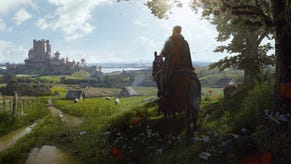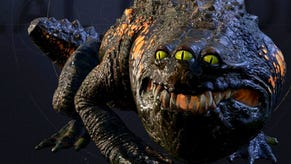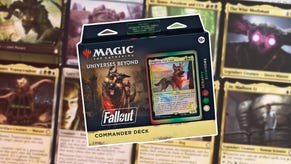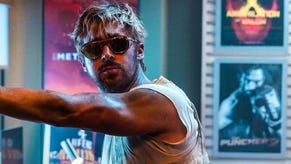USgamer Community Question: What's Your Favorite PS2 Memory?
This week: what do YOU remember most about the PlayStation 2?
This article first appeared on USgamer, a partner publication of VG247. Some content, such as this article, has been migrated to VG247 for posterity after USgamer's closure - but it has not been edited or further vetted by the VG247 team.
With the PS2 celebrating the 15th anniversary of its Japanese launch next week, we thought we'd talk about Sony's seminal console for this week's community question. More specifically, your memories associated with it. What do you remember most about the biggest-selling console of all time? Is there a special game that you associate with it, or does it represent a particular time and place for you? Whatever it is, we'd love to hear about it.
While you think about your favorite PS2 memory, here's what Team USG has to say about one of the greatest consoles we've ever seen.
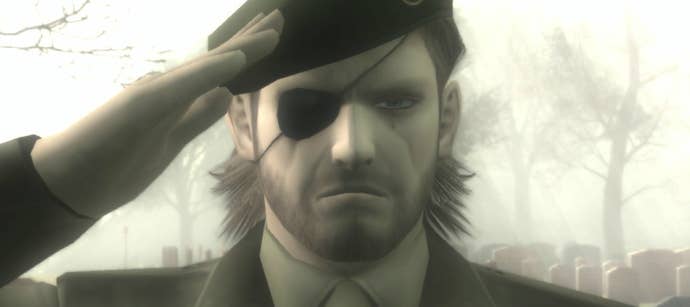
Jeremy Parish, Editor-in-Chief
You know, it's weird. Like the rest of the planet, I owned a PlayStation 2, and I played dozens and dozens of games on it. But I don't really have any particularly striking memories of the system, despite the fact that it was the dominant platform during the years when I was establishing a career in the games press. It's all kind of a blur… maybe because of the games press thing. I had to pay my dues reviewing a ton of middling PS2 releases in rapid succession, and over time those memories turn into a sort of dull sludge in the aging brain.
I think perhaps the most important thing the PlayStation 2 did for me was to teach me the value of modulating hype. I was totally on board with the PS2 hype train after falling hard for the original PlayStation, and I was convinced it would be the system to end all systems. Did you see the way that watermelon exploded in the MGS2 demo!? OMGGGGG. But launch day arrived and I went in early for my preorder and promptly spent the next several months using the console to play PS1 games via component video. You have no idea how good Thunder Force V and Mega Man Legends 2 looked running in RGB on my brand new 27" Trinitron after years of playing on a dinky little 12" TV. Sure, I played a bunch of early PS2 releases, but none of them were particularly interesting. I didn't really find myself hooked by a "next gen" system until the GameCube came along, which completely turned around my opinion of Nintendo after that disastrous N64 era...
Eventually, of course, PS2 did deliver. The iron grip it held over the global market made it site of the Japanese games industry's last widespread stand on consoles before all but the biggest-budget games went handheld. PS2 was probably the most fertile platform ever for localized "weird" games, from Mr. Mosquito to Katamari Damacy. Some of the more expensive releases for PS2 held my interest, sure, but by that point the multiplatform release philosophy had taken hold and I preferred to get my third-party blockbuster fix on GameCube. Nothing could compare to the sheer breadth of B-tier content available on PS2, though… at least, not until the torch passed along to Nintendo DS a few years later. Nightmare of Druaga turned me on to roguelikes. Steambot Chronicles had me hooked long before it ever came to the U.S., and it also gave me the satisfaction of knowing that my enthusiastic import previews played an important role in the game's localization greenlight. And then there were the massive classic compilations, the import-only titles, the odd little RPGs, and so much more.
And when PS2's big exclusive titles did deliver, they did so in style. Will I ever love a stealth game as much as Metal Gear Solid 3? Will I ever find myself as immersed in a single-player RPG as I was in Final Fantasy XII? I suppose, now that I think about it, what I love most about PS2 is that it was the last console to offer something for everyone: Western and Japanese games, gorgeous blockbusters and niche releases, realistic action games and stylish genre-busters alike. It heralded the new age of the video game business, but at the same time it offered plenty of breathing space for the old ways. I guess it made good on that hype, after all.

Jaz Rignall, Editor-at-Large
My immediate thought goes straight to my favorite PlayStation franchise, Gran Turismo. Right out of the gate, the PlayStation 2 showed that it was clearly a generation ahead of its predecessor - and then some - and Gran Turismo 3 was the ultimate showcase of that technology, released just 12 months after the console debuted. As I said in my IGN review at the time, "When I think of GT3, the words "much hyped," "highly anticipated," and "killer app" immediately spring to mind. Let's face it, unless you're a PlayStation 2 owner who has a really, really, really deep-down hatred for racing games, GT3 is the most important release yet for Sony's l'il black box."
Sure, there had been some really good releases on the system already, but GT3 pushed PS2 software to new heights. I continued, "Graphically, it's a marvel. Super-smooth, incredibly detailed and stunningly lifelike, GT3 raises the graphics bar several notches beyond any racing game we've ever seen before, inside or outside of a videogame arcade. Phenomenal object modeling is combined with amazing attention to detail and astounding lighting to deliver a simply incredible racing experience. The way the sun bounces off the road as you turn corners and glints off the metal and glass surfaces of the cars completely fools your eyes into believing they're watching real cars drive around real tracks. The shadows and lighting are used to really bring the environment to life and make it look more solid, more visceral and more realistic than any other race game."
That breathless diatribe was written after my first, very long session with the game. I remember playing it for hours, barely believing how good it looked, and indeed how well the game played. Comparatively, the prior second Gran Turismo looked highly pixelated and lacked detail. Gran Turismo 3, on the other hand, looked phenomenal in all its 480p glory. At the time it felt almost photo-realistic. This was indeed the next generation of software, and it made a huge impact on me. I ended up playing it more than any other Gran Turismo game.
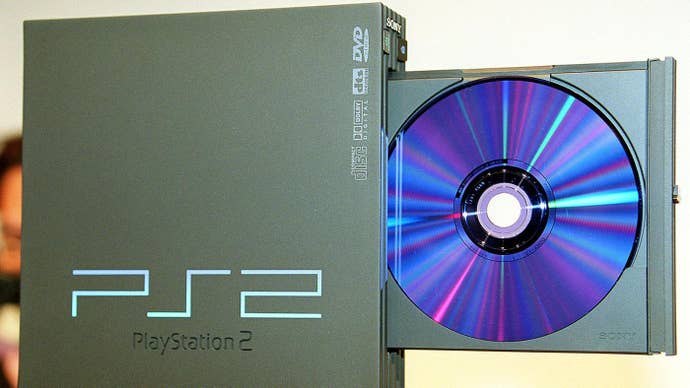
Mike Williams, Associate Editor
My colleagues will talk about many things that happened during the PlayStation 2 era. They'll talk about games and experiences. They'll tell you about the times they remember playing games like Final Fantasy X, Shadow of the Colossus, Resident Evil 4, Prince of Persia: Sands of Time, Silent Hill 2, SSX Tricky, or Persona 4. They'll regale you with tales of days gone by, of a time before our games ballooned so big that they couldn't take real risks. They will make you remember the rise of Clover Studio, Level-5, Nippon Ichi, Criterion, or Sony Santa Monica.
They will not tell what truly is the thing we all will remember from the PlayStation 2's launch. The mark that remain burned into our hearts and minds until this day.
It was the coming of the blue, a blue that is with us even today.
The system had the first blue LED. Yes, my friends. Ah, the sleepless nights spent staring at the blue eject LED, shining through the darkness like an azure demon. While green or red may dull in the darkness, the blue is pure. It shines through, burying itself in your skull. Who could forget the blue LED flashing as your PS2 refused to eject your favorite game?
The PlayStation 2's early discs also had blue bottoms. Surely you remember flipping over your launch PS2 games to stare at the blue abyss. I used to think the blue was for some technical reason, like it would allow the games to run faster or the system to read the discs better. In actuality, the blue discs were more prone to PS2's disc read error. Oh, young Mike, you poor naive fool. They were just blue because blue is awesome.
No system since has been so audacious as to be so blue. For that, I thank you, PS2.
Kat Bailey, Senior Editor
I have a lot of PlayStation 2 memories, but I didn't actually own one of the things until 2005—the year that the Xbox 360 dropped the curtain on the PS2/Xbox/GameCube generation. That was about the time that I moved to Japan, whereupon my PlayStation 2 earned a new lease on life.
After living in Japan for about a year, I fell hard for Super Robot Wars and started trying to find ways to play it on my PlayStation 2. My options were pretty much to buy a Japanese PS2 or find a way to mod my PS2 Slim. Being kind of poor at the time, I opted for the latter option and bought a fliptop kit.
This was the way it worked. I had to break the seal and open up my PS2, thus voiding the warranty. Then I had to unscrew the pop-up disc cover and replace it with a fliptop that would allow me to swap discs without rebooting the PS2. Finally, I would put everything together again and pray that it would all work. I was never very good in shop class, and I was terrified that I would destroy my console; but I needed my robots, so I decided to give it a go.
Incredibly, everything went smoothly. The PS2 popped open, the covers were swapped, and I had a fully-functional multi-regional console. I ended up playing hundreds of hours worth of Japanese games on it; and even today it still resides under my TV, mostly because my PlayStation 3 can't play Japanese games and I don't want to get rid of my copy of Super Robot Wars Z.
It's funny that my overriding memory of owning a PlayStation 2 involves basically tearing it apart, but that little fliptop has kept it on my house long past its sell-by date. I couldn't be happier.
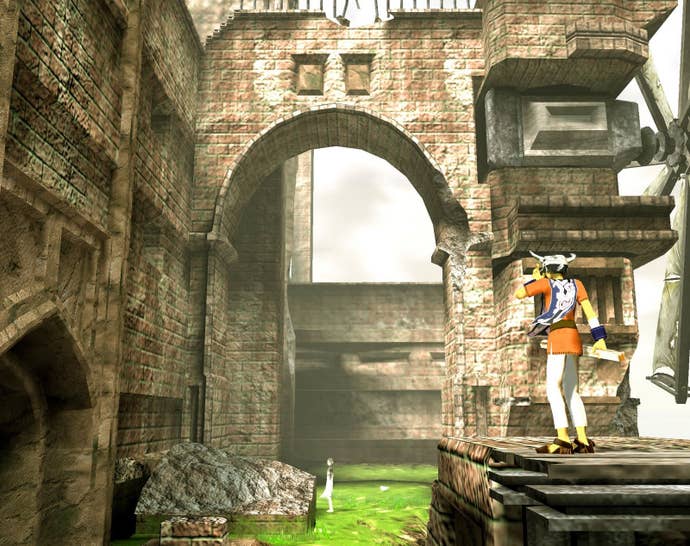
Bob Mackey, Senior Writer
A console's first year is usually its worst--that shouldn't be news to any of you. Regardless, plenty of people found themselves in possession of a PlayStation 2 at launch, simply because it was the console to own at the time. Even if we wouldn't see any notable games for months, the thing at least had a DVD player to keep us entertained, right? Plus, the expected hardware shortages made PS2 ownership feel like the privilege of an elite few--so it only makes sense that I spent the remainder of 2000 playing nothing but late PlayStation releases like Final Fantasy IX and Mega Man Legends 2.
The PS2 teased me that spring with the Metal Gear Solid 2 demo packed in with Zone of the Enders--like many of you, I probably played that thing over a dozen times. And while I was convinced Hideo Kojima would single-handedly launch us into a New Era of Interactive Entertainment, it wouldn't be until that fall when the PS2 would truly wow me. That season featured a handful of amazing releases by developers that truly took advantage of the console's capabilities: Silent Hill 2, Devil May Cry, and, yes, Metal Gear Solid 2 arrived just in time for the Xbox's launch, giving the PS2's library immediate appeal to anyone who wasn't interested in Halo. But the game that gave me my greatest PS2 memory didn't come from a studio with such an established track record.
Of course, by that point, Ico was a critical darling, and since EGM was basically my Bible, I couldn't not listen to those editors' recommendations. So while I kind of knew what to expect, my idea of where games were going looked absolutely nothing like Ico: To me, the 21st century and this new console generation signified an era of huge, complex experiences, with more moving parts than anything we'd ever seen before. So my first hour-or-so with Ico felt a little off: Where was the UI? I don't even get a mini-map to help me explore this huge castle?
Director Fumito Ueda's sense of minimalism eventually spoke to me, and eventually did an amazing job of removing all of the traditional video game artifice, letting me connect with these two on-screen characters who barely spoke--and when they did, it wasn't even in a real language. All this, in an era where non-interactive cinema scenes were at their absolute longest! I must have blown through Ico in a solid weekend, but, even after paying 50 dollars for a new copy, I didn't feel ripped off in the slightest: Ico showed me a different path games could take, and that complexity wasn't always a necessity in terms of narrative or design. In fact, I had just as much fun batting away the same three enemies with Ico's stupid stick as I did experimenting with the hundreds I picked up in the countless Japanese RPGs that crossed my path.
It's hard to believe, but we're coming up on ten years since Ueda's last work, and even with gaming offering a wealth of different experience compared to 2001, 14 years later, it'd be downright strange for Sony to develop an understated game like Ico without filing it away under "indie." We're only just seeing the influence of Ico on modern developers with games like Journey and Brothers: A Tale of Two Sons, and I doubt it'll stop there. Ueda's creative vision may never again come into being so fully formed, but the impact he left on plenty of people (like me) definitely helped opened everyone's mind to new gaming experiences.

